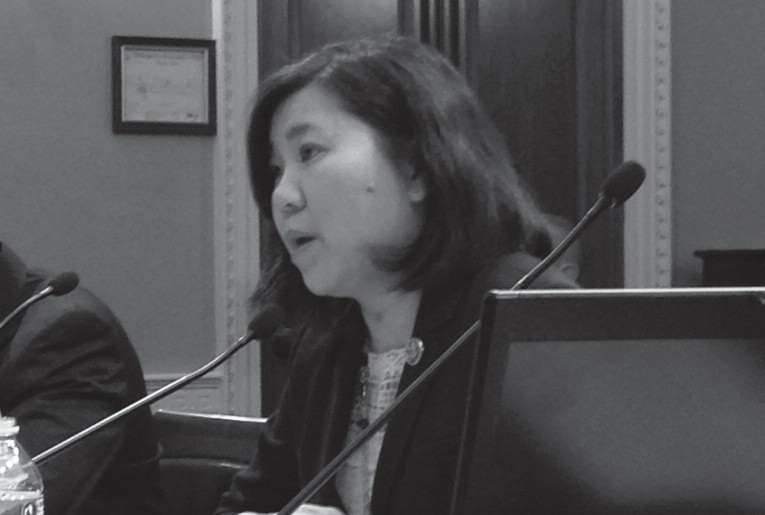Colonial Landmarks Were Laboratories For Religious Freedom In U.S.
Legislation sponsored by Rep. Grace Meng that aims to make historic sites in Flushing part of the National Park Service won support last Thursday, Feb. 27, from the U.S. Department of the Interior, the agency that oversees federal parkland.

The congresswoman’s measure would require the Secretary of the Interior to study the viability of the National Park Service acquiring spots associated with the 1657 signing of the Flushing Remonstrance, the document recognized as the forerunner of religious freedom in America. Sites include the John Bowne House and the Old Quaker Meetinghouse, both located in Flushing.
During a hearing on the bill held in Washington, D.C., by the House Subcommittee on Public Lands and Environmental Regulation, National Park Service Associate Director Victor Knox said that the Interior Department backs Meng’s measure, and if passed, the agency would examine whether the properties meet the criteria to be included in the nation’s national park system.
“The story of the Flushing Remonstrance is critical to Queens’ past, and the history of the entire United States,” said Meng. “I am thrilled that the Department of the Interior supports looking into whether sites connected to the signing of the document could become part of the National Park Service. Their study could lead to the spots becoming either a National Historic Park or a National Historic Site. I urge Congress to pass my legislation so that the process can get underway.”

The Flushing Remonstrance was signed by 30 local citizens of Flushing on Dec. 27, 1657 to protest the policy that banned Quakers from practicing their religion in the colony of New Netherland. The colony, chartered by the Dutch West India Company, included Flushing and other parts of what is now New York State.
However, the Remonstrance was opposed and ignored by the local government.
But things changed after area resident John Bowne was jailed for allowing Quakers to hold religious services in his house. When Bowne was banished to the Netherlands, he appealed to the Dutch West India Company, and as a result, religious persecution ended, and the Quakers were allowed to practice freely.
The John Bowne House, presently owned by the city Department of Parks and Recreation, includes the section built in 1661 that hosted the meetings held by the Quakers, and is listed on the National Register of Historic Places. It is located at 37-01 Bowne St..
The Old Quaker Meetinghouse, owned by the Flushing Monthly Meeting, was built in 1694 by John Bowne and other Quakers, and is a National Historic Landmark for architecture and religion. It is located at 137-16 Northern Blvd..
In his testimony, Knox said the criteria for inclusion in the national park system would be based on the sites meeting national significance, suitability, and feasibility, as well as the need for National Park Service management. He said that the study would also consider other alternatives for preservation and protection. He estimates the cost of the study to range from $200,000 to $300,000.
Meng also testified before the committee where she talked about the importance of her legislation.
Meng’s bill, entitled the Flushing Remonstrance Study Act (H.R. 3222), was introduced just five months ago on Sept. 30, 2013. It is pending before the Natural Resources Subcommittee on Public Lands and Environmental Regulation, the panel that convened the hearing.


































